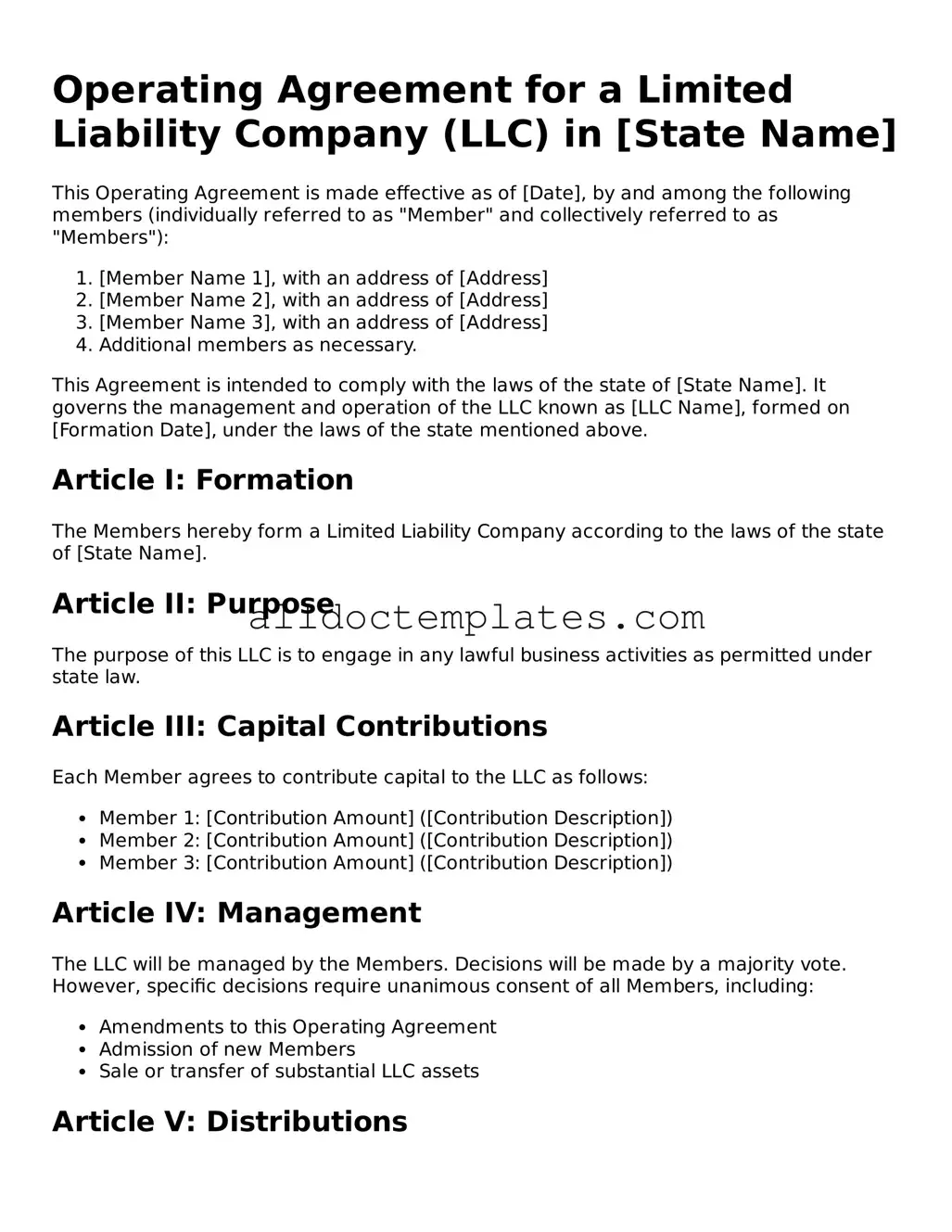Operating Agreement for a Limited Liability Company (LLC) in [State Name]
This Operating Agreement is made effective as of [Date], by and among the following members (individually referred to as "Member" and collectively referred to as "Members"):
- [Member Name 1], with an address of [Address]
- [Member Name 2], with an address of [Address]
- [Member Name 3], with an address of [Address]
- Additional members as necessary.
This Agreement is intended to comply with the laws of the state of [State Name]. It governs the management and operation of the LLC known as [LLC Name], formed on [Formation Date], under the laws of the state mentioned above.
Article I: Formation
The Members hereby form a Limited Liability Company according to the laws of the state of [State Name].
Article II: Purpose
The purpose of this LLC is to engage in any lawful business activities as permitted under state law.
Article III: Capital Contributions
Each Member agrees to contribute capital to the LLC as follows:
- Member 1: [Contribution Amount] ([Contribution Description])
- Member 2: [Contribution Amount] ([Contribution Description])
- Member 3: [Contribution Amount] ([Contribution Description])
Article IV: Management
The LLC will be managed by the Members. Decisions will be made by a majority vote. However, specific decisions require unanimous consent of all Members, including:
- Amendments to this Operating Agreement
- Admission of new Members
- Sale or transfer of substantial LLC assets
Article V: Distributions
Distributions will be made to Members according to their respective percentage interests in the LLC:
- [Member Name 1]: [Percentage Interest]
- [Member Name 2]: [Percentage Interest]
- [Member Name 3]: [Percentage Interest]
Article VI: Indemnification
The LLC shall indemnify and hold harmless each Member from any losses, claims, or damages incurred in connection with the LLC’s activities, provided that such Member acted in good faith and in the best interests of the LLC.
Article VII: Amendments
This Operating Agreement may be amended only with the written consent of all Members.
Article VIII: Miscellaneous
This Agreement constitutes the entire understanding between the Members. Any prior agreements, whether written or verbal, are superseded by this Operating Agreement.
Members hereby indicate their agreement by signing below:
__________________________
[Member Name 1], Member
__________________________
[Member Name 2], Member
__________________________
[Member Name 3], Member
Date: ________________
